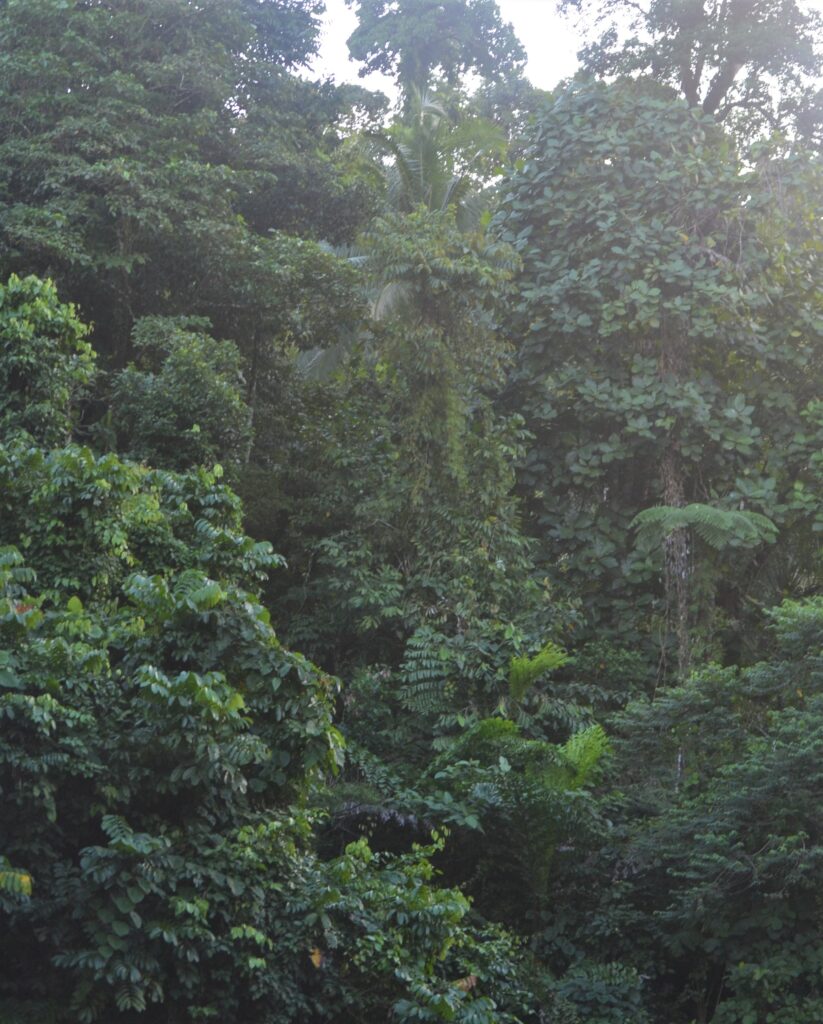Text and Photos by Henrylito D. Tacio
When you think of trees, you think of lumber, fuelwood, furniture, and timber. But on second thought, there’s more to trees than just woods. In fact, if you think it over, forests — from which most of the trees are growing — are a source of medicines.
“Many of nature’s medicines have become so integrated into our daily life that we think no more of them than we do a cell-phone, computers, or HDTV. Yet these medicines represent an irreplaceable cornerstone of the foundation of modern society,” writes Dr. Paul Torrence, an Emeritus Professor of Chemistry and Biochemistry at Northern Arizona University.
Tropical rainforests (of which the Philippines has) account for only seven percent of the world’s total landmass. Yet, they harbor as much as half of all known varieties of plants. Experts say that just a four-square-mile area of rainforest may contain as many as 1,500 different types of flowering plants and 750 species of trees.
“Their biotic diversity is legendary,” points out Prof. Norman Myers, a British environmentalist specializing in biodiversity who has been a consultant to several United Nations agencies, the World Bank, and other organizations.
Recent research reveals that the canopies of tropical forests may well contain 30 million insect species. This means, according to Prof. Myers, that while the forests cover only 6% of the Earth’s surface, they are home to 70% — and possibly as much as 90% — of all the planet’s species.
Now, let’s go back to medicines. According to the UN Food and Agriculture (FAO), the active ingredients in 25% of all prescription drugs in the world today come directly from medicinal plants (though not all of these grow in forest habitats).

According to Environmental Magazine, some 120 prescription drugs sold worldwide today are derived directly from rainforest plants. The U.S. National Cancer Institute (NCI) reported that more than two-thirds of all medicines found to have cancer-fighting properties come from rainforest plants.
Examples abound. “One of the biggest breakthroughs against cancer in recent decades has stemmed from the Madagascar periwinkle (Catharanthus roseus), the source of two potent drugs used against leukemia and Hodgkin’s disease,” Prof. Myers writes.
It has been reported that the ingredients obtained and synthesized from a now-extinct periwinkle plant have increased the chances of survival for children with leukemia from 20% to 80%. The NCI believes tropical rainforests may well contain “at least ten further plants with similar potential against cancer.”
There are also compounds derived from rainforest plants that are now used to treat malaria, heart disease, bronchitis, hypertension, rheumatism, diabetes, muscle tension, arthritis, glaucoma, dysentery, and tuberculosis, among other health problems.
“We cannot imagine a world without antibiotics such as penicillins, cephalosporins, doxycycline, or erythromycin, without pain relievers, without muscle relaxants, without oral contraceptives, without cancer drugs like Taxol, without blood pressure lowering drugs like lisonopril, without digoxin for heart failure, without local anesthetics, and without anticoagulants like coumarins for thrombosis,” Dr. Torrence points out.
People should be thankful for the wealth of tropical forests next time they visit a pharmacy. “There is one-in-four chance that our purchase will derive from tropical forest plants,” Prof. Myers says. “It may be an antibiotic, an analgesic, a diuretic, a laxative, a tranquilizer or even just cough drops, among many other products.”
Not too many know that the contraceptive pill was originally manufactured from a wild yam growing in Mexico’s forests. Among the latest pills comes courtesy of a forest plant of West Africa. There is also some hope that therapy to counter Acquired Immune Deficiency Syndrome (AIDS) lies with a plant in Queensland’s forests.
There has been a surge of interest in recent years in ethnobiology, ethnobotany, and other interdisciplinary fields of research that take traditional knowledge and culture as starting points in the search for new medicines.
“Folk medicine is the standard source of medical treatment for at least three-quarters of the world’s people; some analysts set the figure as high as 90%,” says a publication published by the UN Food and Agriculture Organization (FAO). In contrast, “Western” or technological medicine is readily available only to one person in four or five worldwide.
Systems of folk — or alternative — medicine take many different forms, but nearly all are based largely on plant extracts. India has more than 2,000 known medicinal plants, Malaysia around 1,000, while Brazil has at least 3,000.
Unfortunately, the tropical forests are fast disappearing. In fact, almost half of the world’s tropical rainforests have already been destroyed. “It is insanity to let this destruction continue,” deplores Prof. Myers. “Yet an area of rainforest the size of six football pitches is still being destroyed every minute of every day.”
Can this phenomenon still be reversed?
“To protect the forests, we must protect the tribal people who have evolved a way of life in sustainable harmony with their habitat,” said John Hemming, director and secretary of the Royal Geographic Society in London. “I have studied the tragic history of countless tribes that have fought and suffered and are now extinct.”

